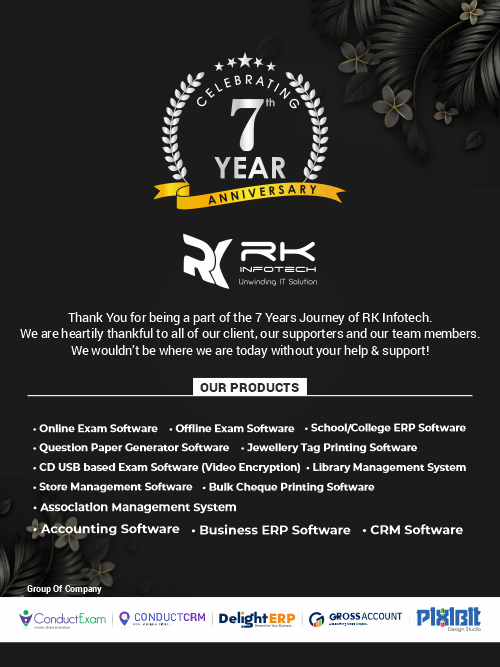Top 10 Benefits of Lead Management Software
Introduction to Lead Management Software
Consider a situation where you have opened a preschool and have to handle a single kid. All your attention will be dedicated to that kid and you can take the utmost care of that kid. Imagine one more kid has been enrolled in the preschool. Still, you can manage somehow to dedicate your attention to one kid at a time without affecting your efficiency and performance. But, suddenly, a dozen kids get enrolled in the school together. In this case, will it be possible for you to dedicate your attention to one kid at a time in a fixed period? Or, how many kids you can take care of at a time effectively?
The scenario discussed above can be related to the scenario faced by the large organizations today, in case of generating leads. In the initial phase, when the company had been just launched, the number of leads generated was one or two per day. Hence the sales and marketing team can dedicate their whole time to those leads and hence there was a drastic growth in the conversion ratio too because due to the personal attention received, there were healthier relationships between the leads and the organization.
But as the company started growing, the number of leads generated daily also increased. Though there was an expansion in the sales and marketing teams too in terms of the number of teammates, there was a scenario where the number of leads generated became out of control of the sales and marketing teams.
This resulted in less attention to the leads and hence the conversion ratio for the company gradually decreased. This is when the concept of lead management came into the picture.
Conventionally, we define lead management as the process that manages leads keeping them all equal and providing equal attention to them. But this approach has become outdated for a long time. The technique for lead management is not only just about managing leads and giving them equal attention. The modern approach has the integration of sales and marketing. Hence, the new and actual definition of lead management would be:
“A process that captures leads tracks their behavior and activities, qualifies them, provides consistent attention to make them ready for sales, and then handing them over to the sales department is known as an effective Lead management.”
To understand this concept in detail, let us have a look at the steps to be followed for effective lead management:
1. Automation for lead capturing:
It is related to the assessment of the sources from where most of the leads are generated and hence affects the revenue of the company too.
2. Tracking of leads:
The behavior of the leads- like the web pages they visit frequently, the survey forms they fill, the amount of time spent in reading the company’s blog, etc. are tracked, for the reference of the insights of the interest of lead.
3. Distribution of leads:
In the case of a large number of leads, the leads are distributed to the members of the sales team.
4. Qualifying the leads:
The leads are assessed based on their responses and interests, whether they are worth the dedicated attention or not, and whether they can be sales-ready or not.
5. Nurturing the leads:
There might be certain leads who would not be interested in the company’s product. In this case, counseling them and making them agree to buy a product is the process of lead nurturing.
What is Lead Management Software?
The process of lead management discussed above takes a large amount of effort and time from the sales and marketing employee’s side, if executed manually. Also, the manual procedures are vulnerable to errors and there are chances that the leads are lost. Hence, there is a requirement of the system that handles all the lead management process automatically and helps in reducing the workload of the employees. Such a system developed is called Lead Management Software.
Lead management software is a system that clarifies the leads that you are targeting; transmits the leads through the pipeline, and the selection criteria to qualify the lead.
The processes followed by the lead management software are similar to the lead management steps discussed in the previous section, with more number added functionalities and automation. Hence, let us discuss what automated lead management software provides in its bucket.
The steps followed in the lead management software are as follows:
1. Identifying the leads:
This stage includes the determination of the prospects that might be interested in our product. With this stage, you can come to know which lead can be passed on to the sales conversion pipeline further.
The following information of the leads might be helpful at this stage:
– Demographics: Check whether the patterns like the location of the lead, company, role, etc. match the product that we are promoting.
– Source: Check the platform from where the lead has been captured.
– Behavior: Check the behavior of the lead when he visits our website and the amount of time it spends reading the content.
2. Figure out the procedure to conduct sales:
List down the stages that are already executed and the stages that are to be visited further to track the process of the lead conversion. This stage is typically about preparing documentation of the progress of your leads in the sales funnel.
The sales and marketing departments work together at this stage to filter out the operations carried out and further plan for the upcoming stages.
3. Generating the leads:
Tricks and tactics used to gain the attention of potential customers and convincing them to share their contact details so that they can be used in promotional campaigns are included in this stage.
The most effective lead generation sources are events, business official website, applying SEO techniques, marketing through email, etc.
4. Scoring the leads:
The determination of the readiness of the customer to purchase the product is determined in this stage. This value may vary by changing brands, industries, audiences, etc. Apart from this, the basic four entities that determine the lead score are
– whether the lead is a fit for the product
– His interest
– Behavior in the counseling
– Buying a pattern
5. Nurturing the leads:
If a lead has a higher score, then also we could not predict whether he will be converted to a potential customer. Hence, the sales and marketing teams work on the leads that are interested but do not want to give a go-ahead in the pipeline, converting them at the end as a potential customer. This is done using email marketing, educating the leads through blogs, webinars, campaigns on social media, etc.
10 Benefits of Using Lead Management Software:
The following are the benefits of using lead management software in an organization:
1. Easier to monitor the sales process:
There is a check on the leads not getting leaked or lost in the sales funnel. Each lead entering the system is well tracked and maintained till the nurturing process.
2. Effective management of leads:
The lead management software has the advantage of qualifying the leads using various filters discussed above. As the source of the leads is known, managing those leads is an easy process.
3. Managing the contacts of the leads:
The contact details of the leads are managed efficiently such that they are in continuous touch with the company and hence the chances of lead leakage do not arise.
4. Customer interactions can be personalized:
You can store the discussions made with your leads for future reference, which can be accessed by you only. This is helpful for the people handling multiple leads in a day as the point of discussion can be mixed up if not managed properly.
5. Saves your time:
The lead management process described in the previous section was implemented manually which resulted in more time waste. The salesperson did not focus on productive ideas to accomplish these tasks. The lead management software automated all these processes and saved a lot of time so that the salesperson can focus on improving the productivity of the company.
6. Implements transparency:
The leads are assigned to the concerned salesperson transparently. Hence, there are no issues of workload being divided unevenly, or the efficient leads assigned to the particular person, etc.
7. Generates reports easily:
The analysis reports can be generated in no time regarding the status of the leads, sales conversion ratio, the salesperson concerned with the conversion, its performance, amount of sales, leads generated among various social media platforms, etc.
8. Effective nurturing of leads:
The leads that are qualified but not able to convert to the customers because of lack of interest, budgets, future references, etc. are counseled in such a manner that they are diverted in the direction of at least thinking to purchase the product.
9. Real-time tracking of leads:
The leads are tracked on their social media and other online platforms, and based on the activities of the lead on these platforms, the lead score is generated to predict whether the lead is qualified or not.
10. Introduces teamwork:
The lead management software integrates the sales and the marketing departments and hence both the teams work together to achieve the desired sales target.
Also Read: Increase Business Productivity Using Modern IT Technology
CONCLUSION:
In this blog, we came across the introduction of lead management, its steps, lead management software, and how it is beneficial if deployed in an organization. I hope this information helps!
Thank You For Reading!!








